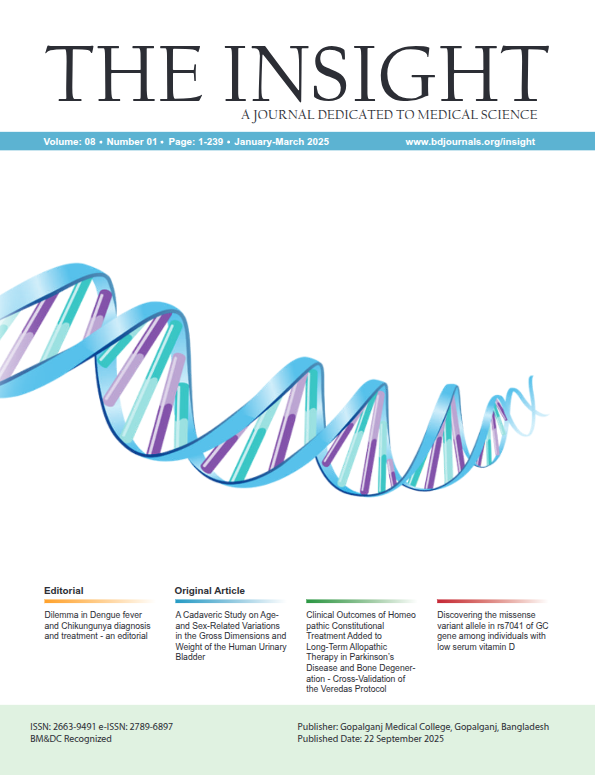Abstract
Background: Chronic liver disease (CLD) is a major global health challenge, with hepatitis B virus (HBV) and hepatitis C virus (HCV) being the predominant causes. Thrombocytopenia is a frequent hematological complication of CLD, reflecting disease severity and influencing management. However, data regarding its prevalence in Bangladeshi patients remain limited. Objective: This study aimed to determine the prevalence of thrombocytopenia among patients with CLD due to HBV and HCV infection and to evaluate its distribution by age, sex, and disease severity. Methods & Materials: This cross-sectional observational study was conducted at the Department of Medicine of Dhaka Medical College Hospital and Anwar Khan Modern Medical College Hospital from June to November 2011. One hundred patients with CLD secondary to HBV or HCV infection, diagnosed using clinical, serological, and imaging criteria were enrolled. Demographic information, platelet count, and Child-Pugh classification were also recorded. Data were analyzed using SPSS version 16. Results: Among the 100 patients with CLD, 79 had HBV-related and 21 had HCV-related diseases. The mean age was 42.3 ± 11.4 years, with a male predominance. Thrombocytopenia (<150×10⁹/L) was observed in 28 patients with HBV (35.4%) and nine with HCV (42.9%). Its prevalence increases significantly with disease severity, occurring in almost all Child-Pugh Class C patients. Conclusion: Thrombocytopenia is a common finding in HBV- and HCV-related CLD, particularly in advanced disease, underscoring its clinical and prognostic significance. Regular platelet monitoring should be integrated into patient management to improve risk assessment and the treatment outcomes.

This work is licensed under a Creative Commons Attribution 4.0 International License.
Copyright (c) 2025 The Insight





 PDF
PDF